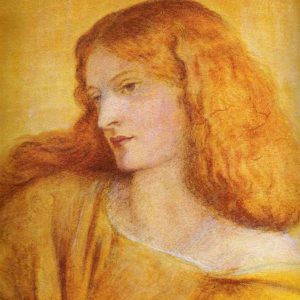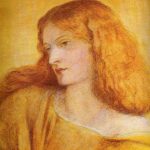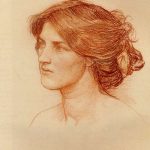ROBERTO OSTI
Pre-Raphaelite Women: Drawing and Watercolors

$250.00
Monday, 10/17/2022 - 11/21/2022
6:00 PM - 9:00 PM EST
Number of Lessons: 6
The Pre-Raphaelite Artists, an interstitial art movement lodged between Turner and the Impressionists, developed a style characterized by overwhelming detail and luminous colors.
This course is dedicated to copying watercolors and drawings of beautiful renderings of women absorbed in deep thoughts, with distant gazes and voluminous flowing hair, immersed in luscious landscapes and romantic, moralized narrative.
We will be copying works by Waterhouse, Millais, Hunt, Rossetti, exploring their accurate drawing technique and the intricate, jewel-like watercolors that represents so well the Victorian ideal of women.
The techniques studied in this course, will give the participant occasion to develop accuracy in drawing, practice a variety of brushstrokes, explore elegant color harmonies, practice drawing and painting figure and portraits.
Materials
Drawing: white and lightly toned drawing paper, red earth, black and white colored pencils or Conte crayons. Kneaded eraser, sharpener, a sheet of sand paper Other materials will be discussed in class.
Watercolor:
A palette including about 20 colors will be more than sufficient, here is a list of colors you want to have: Cadmium red medium, alizarine crimson, ultramarine blue, cobalt blue, cadmium yellow medium, cadmium yellow lemon (yellow lemon), sap green, Hooker’s green, viridian, yellow ochre (or gold ochre), burnt sienna (and-or English red-red ochre), sepia, black, titanium white gouache.
Also useful: cobalt violet, ultramarine violet, Sheveningen blue and blue gray by Old Holland, burnt umber. You can also bring any colors you already have.
Brushes: one # 12-16 synthetic round brush; one # 2 synthetic round brush, one synthetic, flat brush, about ¾”. You can also buy a # 8 Kolinsky sable brush, they are excellent but very expensive. Winsor and Newton are probably the best but Raphael and Eskoda make really good Kolinsky brushes at a more affordable price.
Watercolor paper: a pad of Arches paper (or Winsor and Newton, or Fabriano), cold press, 11” by 14” will be sufficient. You can also buy full sheets of watercolor paper and cut them to size.
Graphite pencil HB-B, kneaded eraser, pencil sharpener.
Paper tissue and a container for all the supplies.
Pen and ink, brown or black, or a thin marker, also brown or black.
Availability of Courses' Recordings
As part of the services offered by the New Renaissance Atelier, you will have access to the recordings of the video sessions of all the courses you purchased for one year.
You will find the links to the videos in your Personal Video Library that has been set up specifically for you.
Please keep this Video library link on your desktop or in your browser for easy access.
In case You missed a course You are interested in, You can purchase the recording of the video sessions, by clicking on the menu above




